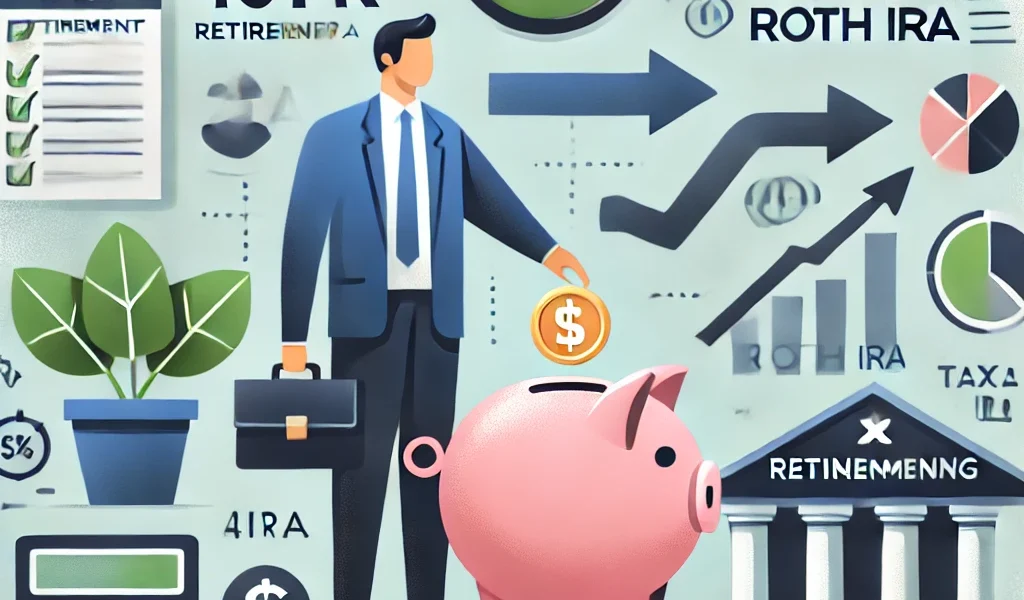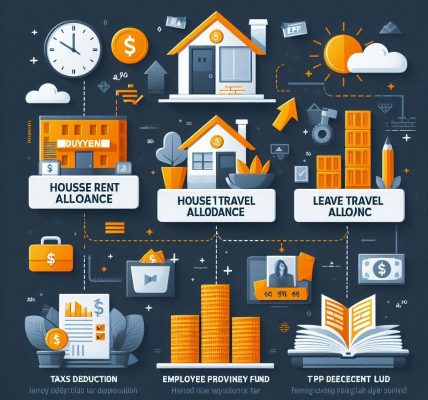Retirement planning is essential for financial security, but without proper tax planning, you could end up paying more than necessary to the IRS. Tax-efficient retirement planning ensures that you maximize your savings and minimize tax liabilities, allowing you to make the most of your retirement funds. This comprehensive guide will walk you through the best strategies for tax-efficient retirement planning.
Understanding Tax-Efficient Retirement Planning
Tax-efficient retirement planning involves structuring your savings, investments, and withdrawals in a way that minimizes your overall tax burden. This includes using tax-advantaged accounts, strategic withdrawal plans, and taking advantage of available deductions and credits.
Key Tax-Advantaged Retirement Accounts
1. 401(k) and 403(b) Plans
Employer-sponsored retirement plans like 401(k) and 403(b) accounts offer tax advantages:
- Traditional 401(k)/403(b): Contributions are tax-deductible, reducing your taxable income. Taxes are paid upon withdrawal.
- Roth 401(k)/403(b): Contributions are made with after-tax dollars, but withdrawals in retirement are tax-free.
- Contribution Limits: For 2024, you can contribute up to $23,000 (or $30,500 if you are 50 or older).
2. Traditional and Roth IRAs
Individual Retirement Accounts (IRAs) provide tax advantages for retirement savings:
- Traditional IRA: Contributions may be tax-deductible, and taxes are paid upon withdrawal.
- Roth IRA: Contributions are made with after-tax dollars, but qualified withdrawals are tax-free.
- Contribution Limits: For 2024, you can contribute up to $7,000 (or $8,000 if you are 50 or older).
3. Health Savings Account (HSA)
An HSA is a powerful tax-advantaged account for medical expenses and retirement planning:
- Contributions are tax-deductible.
- Earnings grow tax-free.
- Withdrawals for qualified medical expenses are tax-free.
- At age 65, non-medical withdrawals are taxed like a traditional IRA.
4. SEP IRA and Solo 401(k) for Self-Employed Individuals
Self-employed individuals can take advantage of:
- SEP IRA: Contribution limit of 25% of net earnings, up to $69,000 in 2024.
- Solo 401(k): Allows employer and employee contributions, up to $69,000 (or $76,500 if 50+).
Tax-Efficient Withdrawal Strategies
Once you retire, how you withdraw your funds can impact your tax bill. Consider these strategies:
1. Follow the Order of Withdrawals
- Taxable Accounts First: Withdraw from taxable investment accounts to minimize required minimum distributions (RMDs) later.
- Tax-Deferred Accounts Next: Withdraw from traditional IRAs and 401(k)s, keeping tax brackets in mind.
- Tax-Free Accounts Last: Roth IRA withdrawals should be saved for last to maximize tax-free growth.
2. Minimize Required Minimum Distributions (RMDs)
- RMDs begin at age 73 for traditional retirement accounts.
- Convert traditional IRA funds to a Roth IRA before RMDs start to reduce future tax burdens.
3. Use Roth Conversions Wisely
- Converting traditional IRA funds to a Roth IRA can help reduce future taxable income.
- Consider conversions in years when your income is lower to minimize tax impact.
Investment Strategies for Tax Efficiency
1. Utilize Tax-Efficient Investments
- Index Funds & ETFs: Generate fewer capital gains compared to actively managed funds.
- Municipal Bonds: Interest earned is usually tax-free at the federal level and potentially at the state level.
2. Diversify Across Tax Categories
- Maintain a mix of taxable, tax-deferred, and tax-free investments to provide flexibility in retirement withdrawals.
3. Harvest Tax Losses
- Offset capital gains by selling investments at a loss, reducing taxable income.
Estate Planning and Tax Considerations
1. Use Tax-Efficient Gifting Strategies
- Gift up to $18,000 per year (per recipient) tax-free in 2024.
- Consider charitable giving to reduce taxable estate value.
2. Designate Beneficiaries Wisely
- Designate Roth accounts to heirs to allow tax-free withdrawals.
- Consider a Qualified Charitable Distribution (QCD) from an IRA to avoid RMD taxation.
Conclusion
Tax-efficient retirement planning is essential to maximize your savings and minimize your tax burden. By utilizing tax-advantaged accounts, implementing strategic withdrawal plans, and choosing tax-efficient investments, you can ensure a financially secure retirement. If you’re unsure about your tax situation, consulting a tax professional can help tailor a plan to your needs.




